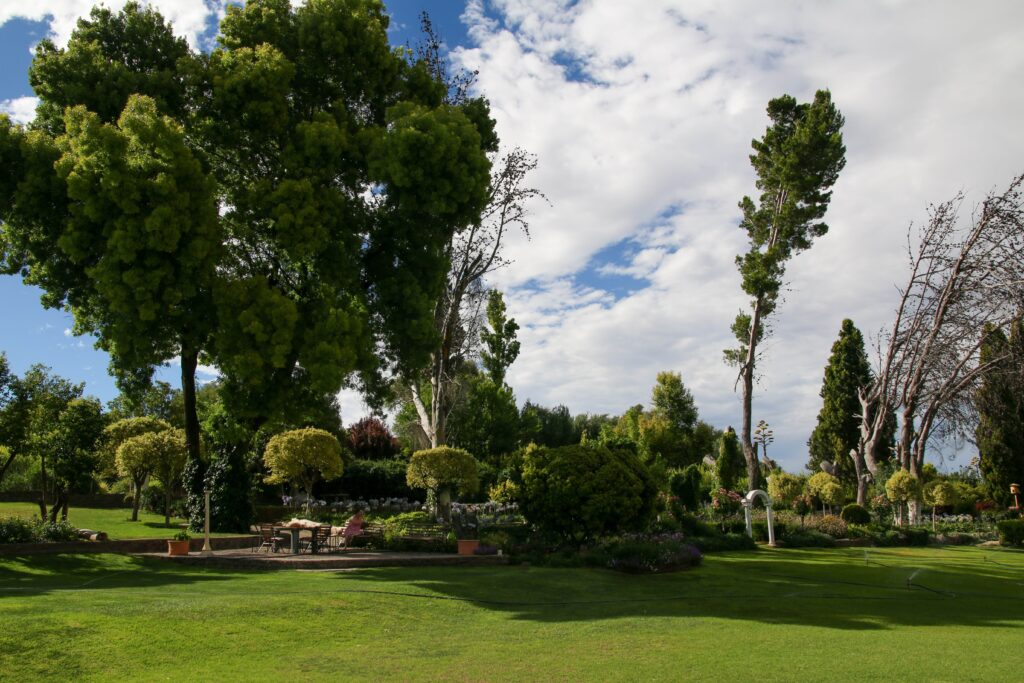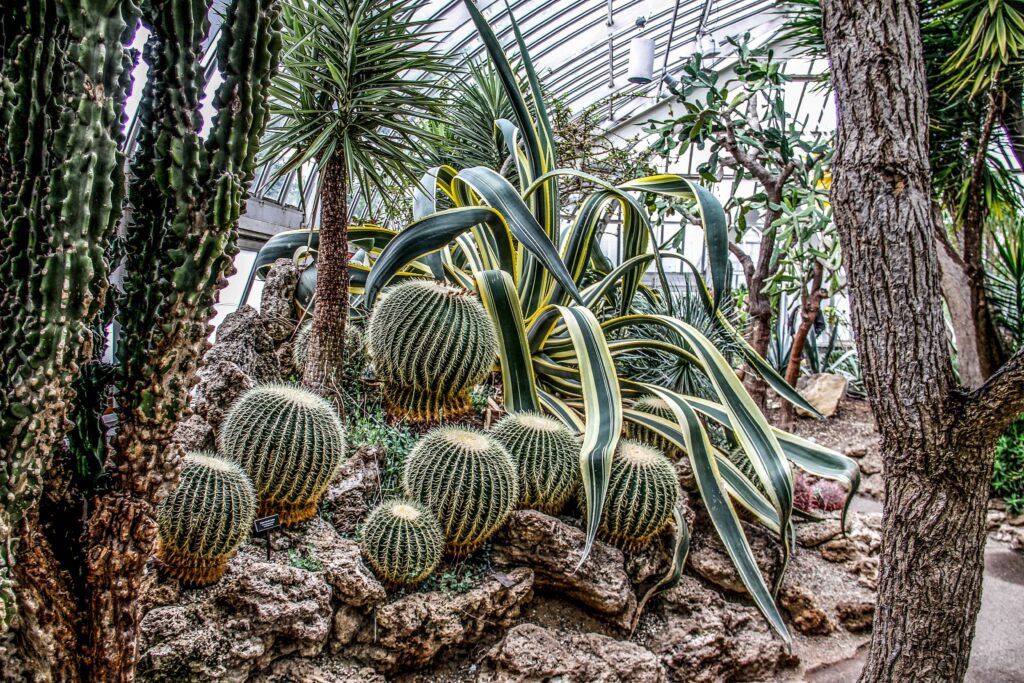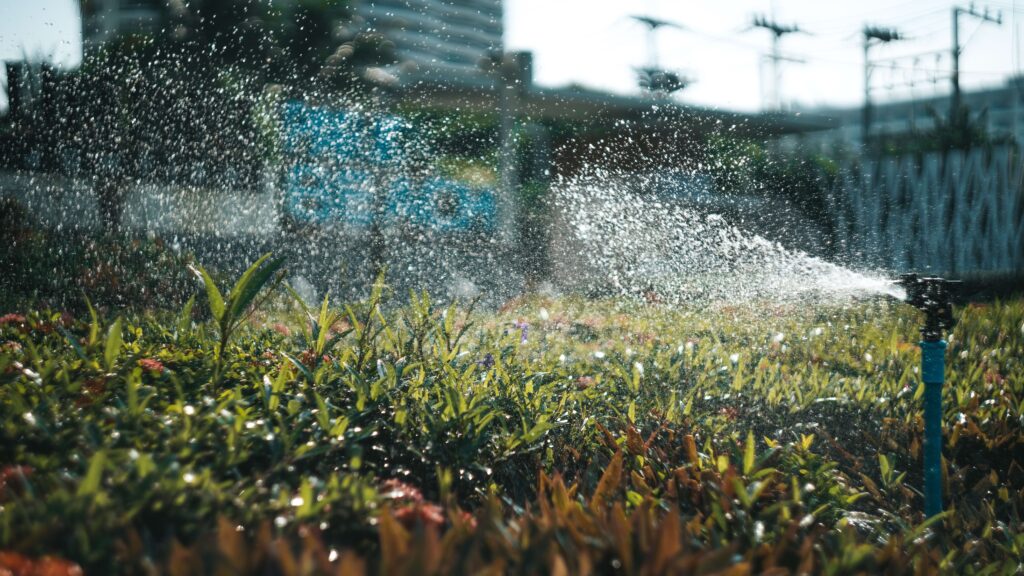
Tired of watering your lawn every year, only for it to turn brown and die off after the first drought?
Living in a drought-prone area means we have to approach gardening a little differently, but it doesn’t mean we can’t create a sustainable backyard oasis.
In this post, we’ll show you how water-wise gardens are the way of the future and how this interesting approach to landscaping can help massively reduce water use.
Table of Contents
What are Water-Wise Gardens?

Water-wise gardens are sustainable landscapes designed to conserve water and promote environmental conservation. They are built using a variety of horticultural practices that focus on reducing water usage, such as selecting drought-resistant plants and shrubs, implementing efficient irrigation systems, and minimizing turfed areas. By creating water-wise gardens, we can save money on water bills, reduce water waste, and support our local ecosystems, especially in drought-prone regions.
The Benefits & Challenges of Creating a Water-Wise Garden

Water-wise gardens seem like a great solution to many challenges we face as gardeners, but there are also important challenges to consider.
PRO: Reduced Dependence on Chemicals
Traditional turf and water-loving plants usually require a lot of chemicals to control pests, reduce disease, and boost growth. With a water-wise garden, you’ll massively reduce your reliance on fertilizers, pesticides, and Miracle-Gro.
PRO: Water conservation
The average single-family home can save around 24.6 gallons per square foot per year by removing their lawn and switching to xeriscaping. If you live in a drought-prone area, this is a huge benefit and means you can ditch the sprinklers.
PRO: Curb appeal
Water-wise gardens don’t have to be barren wastelands. In fact, with some careful planning and the right features, xeriscapes look beautiful year-round.
PRO: Versatility
You don’t need to rip out your entire lawn or totally redesign your garden to create a water-wise landscape. Even if you just have a small area where nothing seems to grow, you can turn it into a versatile oasis with some water-wise gardening principles.
PRO: Low maintenance
Who wants to mow the lawn every week? A water-wise garden is low maintenance and requires much less work than a traditional yard.
CON: Disrupting Ecosystems
If you’ve got a lawn and water-intensive plants in your yard, creating a waterwise garden will disrupt the wildlife that already calls them home. The main focus of a water-wise garden is water conservation, which may mean local wildlife gets forgotten about.
CON: Less insects
Water-wise landscapes tend to have harder, rougher soil that better retains and distributes water. The downside is that insects, birds, and small mammals aren’t as enthused by this type of landscape, so you might see a change in wildlife that comes to your yard.
CON: Cost
Although you’ll save some serious cash on your water bills, it can be expensive to design and install a water-wise landscape. From rock features to irrigation systems, you’ll need to consider your budget when making plans.
Designing a Water-Wise Garden
There aren’t any set rules for designing a water-wise garden. Instead, you need to think about what will work best for your yard. Here are some tips to get you started.
Understand your climate and soil type
Some native plants require almost no water to thrive; others need infrequent watering but prefer moist soil. When you’re planning your new landscape, think about the climate conditions where you live and base your plant selection on that.
You should also think about your soil type. Some native plants love acidic conditions; others thrive in alkaline soil. Do a quick soil test to help you make the right choices for your water-wise landscaping.
Incorporate hardscaping elements to conserve water
The more hardscaping elements you have in your water-wise garden, the less water it will need. When you’re designing your new landscape, try to incorporate rock gardens, walkways, patios, water features, and other hard elements that reduce the need for plants.
Zone plants for optimal water conservation
It’s tempting to dot plants all over your landscape, but this will just mean more water to help them all grow. Instead, create zones where you group plants together to conserve water.
Watering Techniques

Sprinklers and hoses are both inefficient watering techniques, and most of the water evaporates before it can ever penetrate down into the soil.
The best way to conserve water in a water-wise garden is to install a drip irrigation system. This is a customizable system of nozzles that give small quantities of water to specific areas of your landscape.
Because it delivers water at the root of the plants, it’s much more efficient, and you’ll need considerably less water to keep your xeric plants happy.
Popular Water-Wise Plants
There are plenty of water-wise plants to choose from, but here are a few of our favorites.
Rock Rose
Also known as the Sun Rose, the Rock Rose is extremely drought tolerant and has beautiful wiry foliage. You’ll find this species in a wide range of colors, and it grows quickly, so it’s perfect for ground cover. It thrives in full sun and needs well-draining soil to bloom.
Yucca Color Guard
This is a low-maintenance, drought tolerant plant that thrives in hot, dry conditions. Known for its broad, yellow-striped leaves, it produces white bell-shaped flowers in July and August.
Helichrysum petiolare ‘Limelight’
With pretty lime-green leaves and a tendency to spread quickly, the Limelight is perfect for creating ground cover in a water-wise garden. It needs dry conditions (even through the winter) and loves full sun. You can also add this to containers or hanging baskets to create creeping vines.
Enjoy Your New Oasis
Just because you live in a drought-prone area doesn’t mean you can’t enjoy a backyard oasis. By ditching the water-intensive grass and choosing some sun-worshipping, drought-tolerant plants, your garden can look beautiful year-round and help you do your part for the environment by conserving more water.

